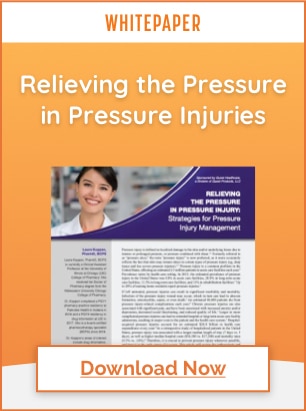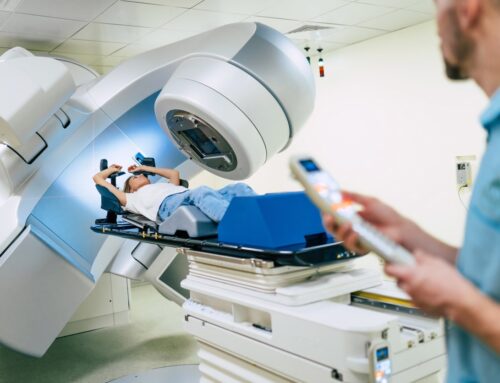
Bowel Care in the Long-Term Care Setting
Constipation is a common ambulatory digestive disease diagnosis in the United States characterized by reduced stool frequency, difficulty passing stool, or both and accounts for up to 3.1 million outpatient visits per year. Constipation is commonly seen in the community over the age of 65 with 74% of individuals in nursing homes using laxatives daily. The high prevalence of constipation in institutionalized elderly patients results in a reduced quality of life and a high economic burden.1 In addition, it is associated with the potentially serious complication of fecal impaction, as well as pain and discomfort.2
Criteria for Constipation
The main criterion for chronic constipation is that the symptoms have persisted for more than three months.
These symptoms include:
- Fewer than 3 spontaneous bowel movements per week
- Straining during of at least 25 percent of the bowel movements
- Lumpy or hard stools at least 25 percent of the time
- A sensation of incomplete evacuation at least 25 percent of the bowel movements
- A sensation of obstruction or blockage for at least 25 percent of bowel movements
- Manual maneuvers to help at least 25 percent of bowel movements
Common Causes of Constipation
There are many causes of constipation. The more common causes of constipation include medications, endocrine and metabolic diseases, neurological disorders, myopathic disorders, depression, general disability, poor mobility, diet and fluid intake and the abuse or overuse of laxatives.
Constipation Caused by Medications
The most common medications that can lead to constipation are narcotics and opioids. These two commonly prescribed medication categories suppress bowel function and can lead to opioid-induced constipation.1
Tricyclic antidepressants, anticholinergic agents, calcium channel blockers, anti-parkinsonian drugs, anti-psychotics, antacids which typically contain aluminum hydroxide, calcium supplements, iron supplements, antihistamines, and diuretics can each increase urination output which can lead to dehydration.1
Fecal Incontinence
Constipation is a leading cause of fecal incontinence. Fecal incontinence is the inability to control bowel movements, causing stool to leak unexpectedly from the rectum. A decrease in quality of life was also noted in those with fecal incontinence.2
Types of fecal incontinence include:
- Functional incontinence – caused when the physical effects such as stroke impede mobility or make it difficult to unfasten clothes in time to use the toilet
- Stress incontinence – small amounts of stool leakage on coughing, sneezing, or laughing. This usually happens because the muscles in the pelvic floor, and sphincter are weak or damaged.
- Reflex incontinence – passing stool without realizing it. This happens when a stroke has affected the part of the brain that senses and controls bowel movement (no awareness)
- Overflow incontinence – the bowel leaks due to being too full. This can be due to a loss of feeling in your lower abdomen/perineal area or difficulty in emptying your Bowels effectively (constipation/impaction)
Fecal Impaction
Fecal impaction is when dry, hard stools collect in the bowel. One study on nursing home residents showed around 50% of residents experienced fecal impaction at least once a year, 30% experienced recurring bouts, and 6.6% were impacted at any given time when a rectal examination was performed.3
Establishing a Bowel Care Program for Incontinence, Constipation or Fecal Incontinence
There are three steps for implementing a bowel care program within an institution.
- Improve stool consistency
- Establish a regular time for elimination
- Initiate complete rectosigmoid emptying on a regular basis
The ENEMEEZ® Adapted Bowel Care Floor Chart can be used for general constipation with or without neurogenic bowel. Each facility may alter the floor chart for specific patient needs and the medical team’s preferences for oral medications.
Signs Your Bowel Management Program is Ineffective
There are numerous signs that your facility’s bowel management program may be ineffective including but not limited to:
- Stool that is hard or rocky/pellets/not producing a bowel movement daily or every other day
- The program takes longer than an hour
- Accidents or incontinence
- Skin irritation related to incontinence or usage of products that continue to stimulate the bowel
- Excessive gas
- Lifestyle revolves around bowel management program
ENEMEEZ® Mini Enemas
The ENEMEEZ® formulation acts as a hyperosmotic, stool-softening laxative that works by drawing water into the bowel from surrounding body tissues used to treat general constipation and incontinence. The docusate sodium in this mini enema product prepares the stool to readily mix with watery fluids. It softens and loosens stool and initiates a normal, replicated bowel movement, typically within 2-15 minutes.
ENEMEEZ® Plus is the same formulation as ENEMEEZ®, with the addition of 20mg of benzocaine, assisting in the anesthetization of the rectum and lower bowel. This formulation was developed for patients who experience autonomic dysreflexia, hemorrhoids, anal fissures, or painful bowel movements.
ENEMEEZ® Versus Competing Products
In a case study3 ENEMEEZ® mini-enema users had less than half of the incontinence episodes as compared to the competitor using Bisacodyl and provided an evacuation in 35 minutes compared to 75 minutes with the competing product.
42% of Bisacodyl users experienced at least one episode of incontinence when using a suppository, whereas that number drops significantly, to only 3%, when using ENEMEEZ® mini-enemas.
Advantages of Using ENEMEEZ® in your Facility
The advantages of using ENEMEEZ® mini-enemas as bowel care in your long-term care facility are as follows:
- May reduce nursing intervention required for in-patient bowel care, and can result in labor cost savings to the facility.4
- May assist in the improvement of patient care and FIM scores associated with bowel care.1
- May assist with facility savings on pads, laundry, gowns, sheets, etc. due to incontinence or fecal discharge.4
- No side effects that interfere with narcotic or chemotherapy medications. Easy rectal usage for patients with pharyngeal reflex, nasogastric tube or nausea.4
- May assist in reducing time missed in therapy/rehabilitation due to episodes of incontinence, prolonged bowel care, or fatigue.4
- May reduce time spent with patients for dressing/redressing due to episodes of incontinence or fecal discharge.4
- Fast, predictable results typically in 2-15 minutes, non-irritating formula. No afterburn.4
Request ENEMEEZ® mini enema samples or an educational In-Service for your facility today.
Disclaimer: The material contained is for reference purposes only. Quest Healthcare, A Division of Quest Products, LLC, does not assume responsibility for patient care. Consult a physician prior to use. Copyright 2022 Quest Healthcare, A Division of Quest Products, LLC.
Sources:
- Dennison C, Prasad M, Lloyd A, Bhattacharyya SK, Dhawan R, et al. (2005) The health-related quality of life and economic burden of constipation. Pharmacoeconomics 23 5: 461–76.
- Glia A, Lindberg G (1997) Quality of life in patients with different types of functional constipation. Scand J Gastroenterol November;32 11: 1083–9.
- Case Study: Glen House, J, & Stiens, S. Pharmacologically initiated defecation for persons with spinal cord injury: effectiveness of three agents. Arch Phys Med Rehabil, 78, 1062-106
- Rehabilitation Nursing (Dunn KL & Galka ML (1994) Comparison of the Effectiveness of Therevac SB and Bisacodyl Suppositories in SCI Patients Bowel Programs, Rehabil Nurs. 19 (6):334-8. Enemeez ®Bisaocdyl Study for Formulary Addition of Enemeez ®. CaliforniaSCI Model System. 10-22-10







